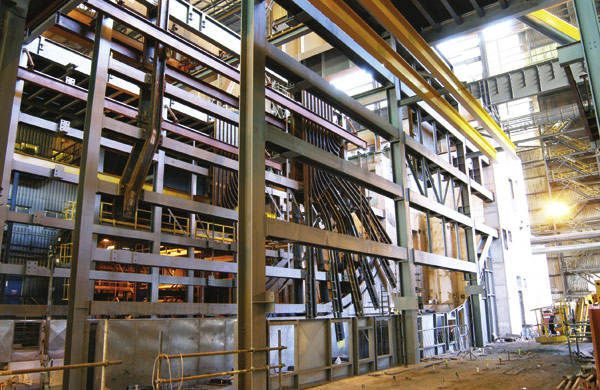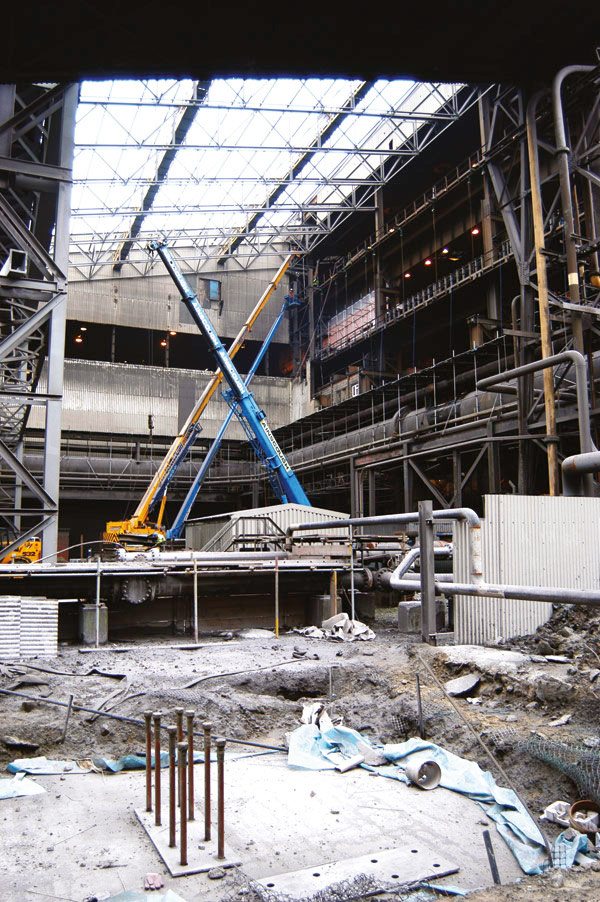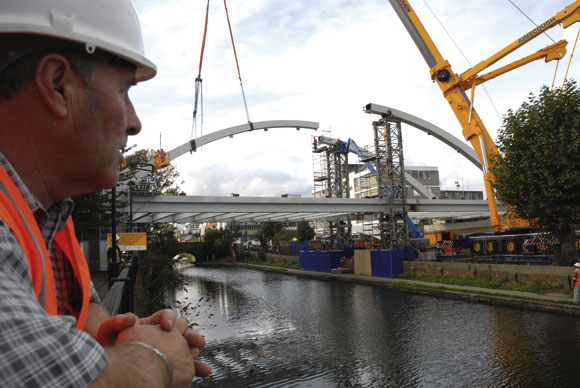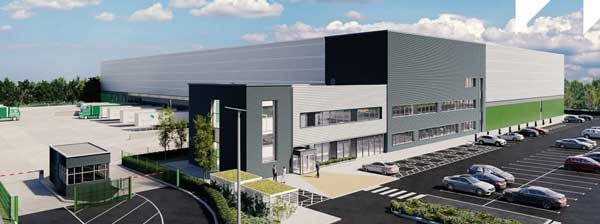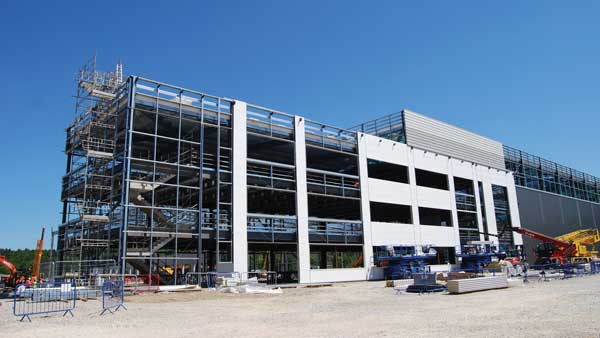SSDA Awards
SSDA 2005 – Concast Facility Extension, Port Talbot Steel Works
One of the toughest steelwork construction challenges of the year was a project to increase the capacity of Corus’ Concast Facility at Port Talbot, South Wales.
FACT FILE: Concast Facility Extension
Client: Corus Strip Products UK
Engineering design and construction: Rowecord Engineering
Value: £22M
The judges recognised that severe logistical challenges had to be overcome to successfully execute this £22M process plant project in a continuously operating steel works.
The Concast facility uses controlled cooling and forming to create continuously cast steel slabs some 234mm deep and up to 1600mm wide, which are cut into 20m lengths. The Port Talbot plant produces some 3.2M tonnes per annum, destined for use in ‘flat products’ such as construction materials, vehicle panels, white products and ‘tin’ cans.
The existing building, at 50m high, is taller than the walkways on Tower Bridge and the new footprint covers the same area as four football pitches. The project involved design, detailing, manufacture and erection of a total of 6,000 tonnes of structural steel which Corus entrusted to Rowecord Engineering Ltd. The extension was to create three bays including internal process steelwork and a new water treatment plant. A 300 tonnes per hour conveyor to the BOS plant also had to be relocated without any downtime.
The design had to take account of a need for the plant being modified in future to take account of technical and commercial changes. The plant dovetails with other processes and there may be a need to adapt to process and programme changes from the Basic Oxygen Steelmaking and later processes in the hot rolling mill..
The presence of existing plant meant a conventional erection method and programme were ruled out, and the working area was very restricted. Given the proximity of the steel works safety of both construction and production personnel became a prime consideration. A key requirement of the works was not to interrupt the production of the Concast plant and to make the changes in a restricted time slot.
“Instead of standard 30m roof trusses, purlins, etc which are usually erected singly and then clad, we designed a solution using pairs of trusses which were fully pre-assembled to create roofing modules with purlins and cladding already fitted,” explained Rowecord’s Managing Director John Blackwell. “The logistical benefit of this was that a roof which might usually take five months to erect and clad took a total of fifteen days to install.“
Alterations were also made to accommodate new facilities, with the most important change being removal of a key column weighing some 150 tonnes to make way for the turret of the new Caster No 3. Removal of the column created the problem of supporting the unit’s two 500 tonne capacity EOT cranes. “The solution adopted was to replace the existing 16m span crane-girders with a single 32m equivalent,” said Mr Blackwell. “This girder needed to be a 4.8m deep plate girder weighing some 120 tonnes. It was made in two 60 tonne sections at our Newport site, and welded together at the Port Talbot Concast site. Installation was in a tandem lift by two 500 tonne cranes.”
The choice of structural steelwork enabled off site modularisation and on site assembly, minimising the time spent on site and allowing production to continue without interruption. This also increased the safety profile, which was further enhanced by on site assembly being carried out at low levels. The project was completed on time and to budget.








